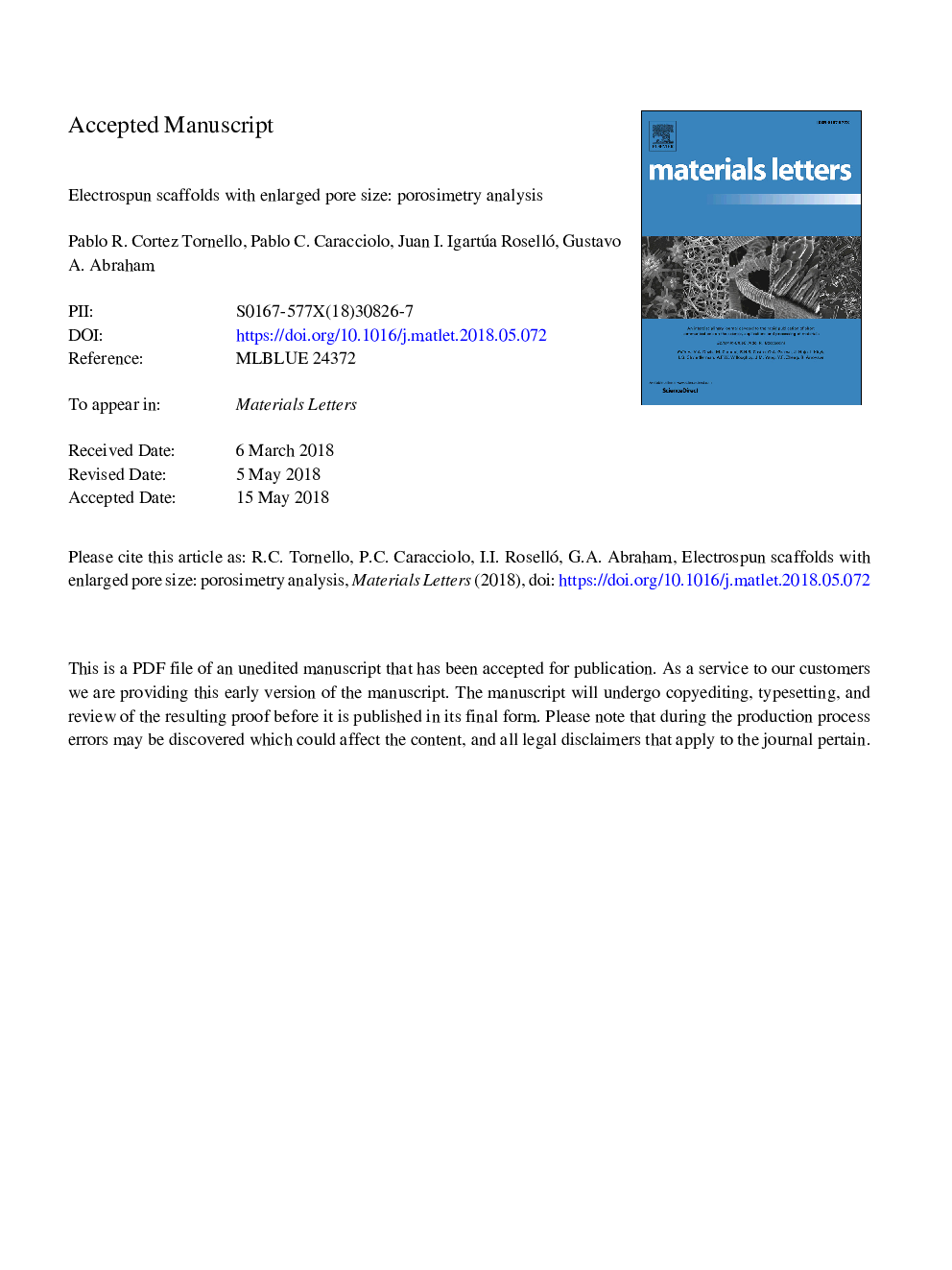| Article ID | Journal | Published Year | Pages | File Type |
|---|---|---|---|---|
| 8012708 | Materials Letters | 2018 | 12 Pages |
Abstract
Electrospun polymeric/composite scaffolds exhibit a micro/nanofibrous structure that resembles the architecture of native extracellular matrix. The unique properties of the interconnected pores and high porosity of electrospun matrices make them very attractive for applications in tissue engineering scaffolding. However, these structures are formed by densely compacted fibers that exhibit pore sizes lower than cell size, leading to poor cell infiltration. In this work, bead-free electrospun poly(ε-caprolactone) fibrous scaffolds were prepared by combining electrospinning and salt-leaching techniques. Non-woven scaffolds were obtained using porogens with different sizes. Liquid extrusion porosimetry was used to accurately determine pore size and its distribution. The structural features of prepared matrices were dependent on the initial porogen size but resulted much smaller than this one.
Related Topics
Physical Sciences and Engineering
Materials Science
Nanotechnology
Authors
Pablo R. Cortez Tornello, Pablo C. Caracciolo, Juan I. Igartúa Roselló, Gustavo A. Abraham,
